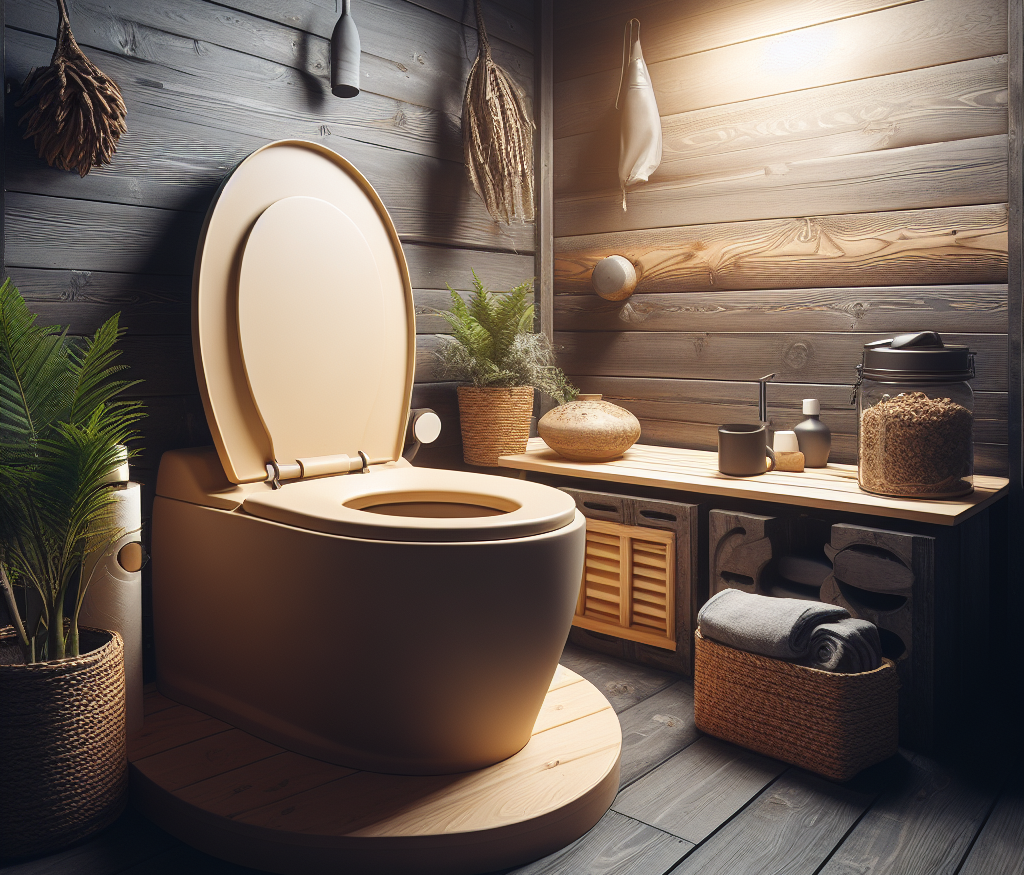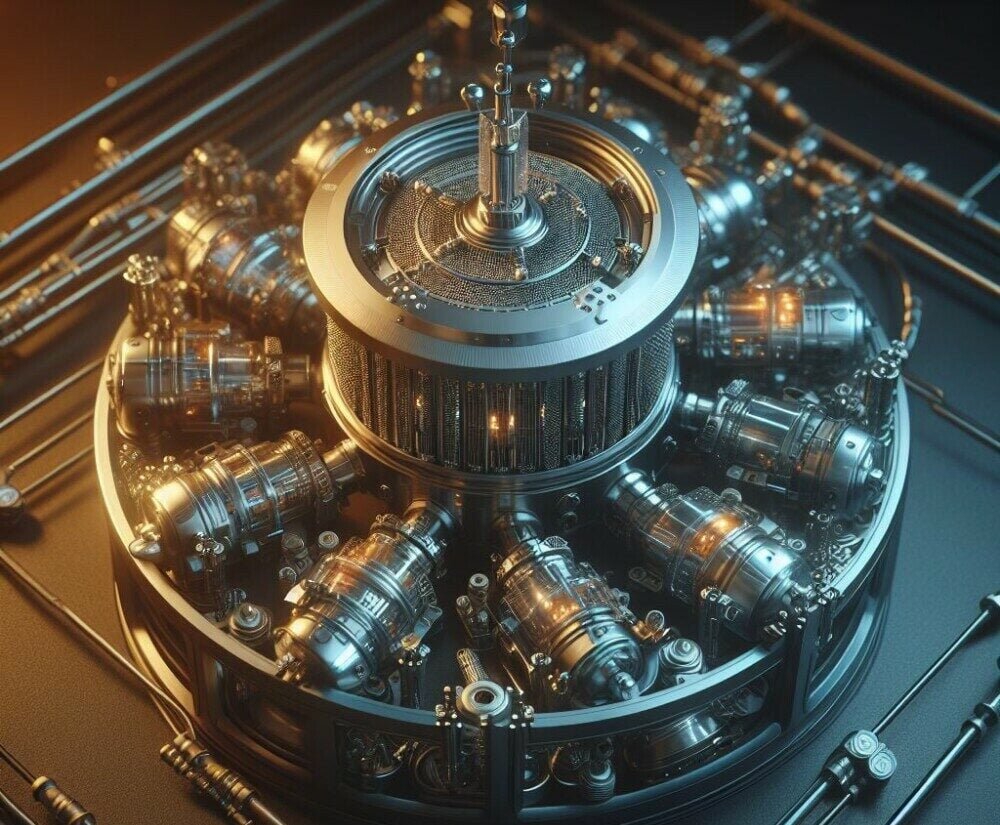What is a compost toilet? Compost toilets represent a revolutionary approach to sustainable sanitation, offering a waterless alternative that goes beyond traditional flush systems. This exploration, breaks down the concept and functionality of compost toilets, distinguishing between compost and composting toilets, while highlighting the environmental significance of embracing waterless sanitation.
I. Exploring the Concept and Functionality of Compost Toilets
Compost toilets, often hailed as eco-friendly solutions, operate on the principle of transforming human waste into nutrient-rich compost. Unlike conventional toilets that rely on water for flushing, compost toilets utilize natural processes like microbial decomposition and aeration to break down waste. This self-contained system efficiently converts human waste into a valuable resource, eliminating the need for water-intensive treatment plants.
A. Microbial Decomposition
One of the key elements in compost toilets is the microbial decomposition of organic matter. Beneficial microorganisms play a crucial role in breaking down waste into compost, creating a sustainable cycle that mimics nature’s own processes. This process not only eliminates the need for water but also mitigates the environmental impact associated with traditional sewage treatment.
B. Aeration
Compost toilets incorporate well-designed ventilation systems that promote aeration within the waste chamber. Adequate airflow facilitates the growth of aerobic bacteria, optimizing the decomposition process. This ensures efficient composting and the elimination of unpleasant odours, making compost toilets a viable and odour-free alternative to conventional sanitation methods.
II. Differentiating Between Compost and Composting Toilets

Although ‘compost’ and ‘composting toilets’ might seem interchangeable, they refer to distinct aspects of waste treatment.
A. Compost
Compost is the end product of the decomposition process within compost toilets. It is a nutrient-rich, humus-like material that can be safely used as fertilizer for plants. Composting toilets strive to create this valuable resource while minimizing the environmental impact of waste disposal.
B. Composting Toilets
Composting toilets are the systems designed to facilitate the decomposition of waste into compost. They encompass various designs, including self-contained units and central systems. Understanding the intricacies of composting toilets helps dispel misconceptions and encourages the adoption of sustainable sanitation practices.
III. Understanding the Environmental Significance
Embracing waterless toilets holds profound environmental significance in the face of growing concerns over water scarcity and pollution.
A. Water Conservation
Traditional flush toilets consume significant amounts of water with each use. Compost toilets, on the other hand, eliminate this water demand entirely, contributing to water conservation efforts and reducing the strain on local water supplies.
B. Pollution Mitigation
Conventional sewage treatment plants can contribute to water pollution if not managed properly. Compost toilets offer a decentralized approach, minimizing the risk of pollution by treating waste onsite. This decentralized model aligns with sustainable development goals, promoting a healthier coexistence with the environment.
Types of Compost Toilets and Their Variations
In the commode of sustainable sanitation, the diverse world of compost toilets offers a range of options tailored to various needs. This exploration digests the nuances of compost toilets, examining the differences between separating and non-separating models, conducting a comparative analysis of compact versus larger units, and shedding light on the crucial role of carbon materials in the composting process.
I. Separating vs. Non-Separating Compost Toilets
Understanding the fundamental distinction between separating and non-separating compost toilets is essential for selecting the most suitable system.
A. Separating Compost Toilets
- Definition: Separating compost toilets, also known as urine-diverting toilets, segregate liquid and solid waste at the source.
- Mechanism: These toilets feature a design that directs urine away from solid waste, minimizing moisture in the composting chamber.
- Advantages: Separating toilets often leads to faster and more efficient composting, reducing the risk of odours and promoting optimal conditions for microbial decomposition.
B. Non-Separating Compost Toilets
- Definition: Non-separating compost toilets combine both liquid and solid waste in a single chamber.
- Mechanism: These toilets allow for a more straightforward design, with all waste deposited into a common chamber for composting.
- Advantages: Non-separating models may be simpler in design and operation, requiring less maintenance and potentially being more suitable for certain settings.
II. Comparative Analysis of Compact vs. Larger Compost Toilet Models

Examining the pros and cons of compact and larger compost toilet models helps users make informed decisions based on space constraints and maintenance preferences.
A. Compact Compost Toilets
- Definition: Compact compost toilets are designed for smaller spaces and are often portable or suitable for tiny homes and recreational vehicles.
- Pros: Space-efficient, easy to install, and may require less maintenance.
- Cons: Limited capacity, more frequent emptying may be necessary.
B. Larger Compost Toilet Models
- Definition: Larger compost toilets are built for higher capacity and are suitable for more permanent installations in homes or larger facilities.
- Pros: Greater waste storage capacity, less frequent emptying, suitable for larger households or public spaces.
- Cons: May require more space, and installation might be more complex.
III. The Role of Carbon Materials in Composting Toilets
Carbon materials play a vital role in the composting process, contributing to the balance of nitrogen and carbon essential for effective waste decomposition.
A. Definition: Carbon materials, such as sawdust, straw, or coconut coir, are added to compost toilets to provide the necessary carbon source for microbial activity.
B. Function: Carbon materials help maintain the right carbon-to-nitrogen ratio, preventing odours and facilitating the aerobic decomposition of waste.
C. Importance: Proper management of carbon materials is crucial for optimizing the composting process and ensuring the production of safe and nutrient-rich compost.
Managing Waste and Odors: The Science Behind Compost Toilets
In the pursuit of sustainable sanitation, understanding the science behind compost toilets is crucial. This exploration involves evaluating waste management and odour control strategies, assessing various methods, and highlighting the role of ventilation systems in maintaining optimal conditions for composting.
I. Evaluating Various Methods for Odor Control
Compost toilets aim to provide an eco-friendly and odour-free alternative to conventional sanitation systems. Achieving effective odour control requires a multifaceted approach, considering different techniques and materials.
A. Carbon Materials
There are several effective bulking agents that you can use in a compost toilet to enhance the composting process. These materials serve to create a balanced environment by preventing compaction, improving aeration, regulating moisture, and aiding in the decomposition of organic matter. Here are some commonly used bulking agents:
1: Sawdust
-Sawdust is a popular bulking agent due to its high carbon content and ready availability.
-It helps maintain a loose structure in the compost, preventing compaction and improving aeration.
-Sawdust is effective in absorbing excess moisture, contributing to odour control and optimal composting conditions.
2: Straw
-Straw is an agricultural byproduct that serves as an excellent bulking agent.
-It adds structure to the compost, enhancing aeration and preventing the waste from becoming too compact.
-Straw also aids in moisture absorption, contributing to a balanced composting environment.
3: Coconut Coir

-Coconut coir is derived from the husk of coconuts and is a natural and sustainable bulking agent.
-It has a high water-holding capacity, helping regulate moisture levels in the composting chamber.
-Coconut coir provides a source of carbon for microbial decomposition and contributes to odour control.
4: Peat Moss
-Peat moss is another commonly used bulking agent with good water-absorption properties.
-It helps maintain aeration and prevents compaction in the compost.
-Peat moss is acidic, so it’s essential to monitor the pH balance in the composting system when using it.
5: Dried Leaves
-Dried leaves are readily available and can be an effective bulking agent.
-They contribute to aeration, moisture regulation, and provide carbon for the composting process.
-Leaves are a natural and biodegradable option for enhancing your compost toilet system.
6: Shredded Newspaper
-Shredded newspaper can serve as a bulking agent, particularly when combined with other materials.
-It adds carbon to the compost and helps in moisture absorption.
-Be cautious about using glossy or coloured newspaper, as the inks may contain substances that are not suitable for composting.
When selecting a bulking agent, it’s essential to consider factors such as carbon content, availability, and the specific needs of your composting system. Combining different bulking agents can provide a balanced mix of carbon and other nutrients, creating an environment conducive to efficient waste decomposition and the production of nutrient-rich compost.
II. How Ventilation Systems Contribute to Odor Control and Moisture Regulation
Ventilation systems play a pivotal role in maintaining a well-aerated composting chamber. Adequate airflow facilitates the growth of aerobic bacteria, which are essential for breaking down waste efficiently. This not only contributes to effective composting but also helps prevent anaerobic conditions that can lead to unpleasant odours.
A. Odor Control
Ventilation systems ensure a continuous flow of fresh air through the composting chamber, helping to disperse odorous gases and promote aerobic decomposition. By preventing the buildup of anaerobic conditions, these systems significantly reduce the likelihood of foul smells associated with traditional waste management.
B. Moisture Regulation
Proper moisture levels are critical for the composting process. Ventilation systems assist in moisture regulation by preventing excessive dampness within the composting chamber. This not only optimizes microbial activity but also prevents the development of unpleasant odours that may arise in overly moist conditions.
Choosing the Right Compost Toilet: Considerations and Options
Selecting the appropriate compost toilet is a pivotal decision when embracing sustainable sanitation practices. Essential considerations and options involve factors such as available space, usage patterns, and personal preferences. Furthermore, examining the impact of user habits on the efficiency and satisfaction derived from compost toilet systems is crucial.
I. Identifying Factors to Consider When Selecting a Compost Toilet
A. Space
- Space: Assess the physical dimensions of the installation area to determine the suitability of a compact or larger compost toilet.
- Portability: Consider if the compost toilet needs to be portable, especially for outdoor or recreational use.
B. Usage
- Frequency: Evaluate the expected frequency of use, as this can impact the size and maintenance needs of the compost toilet.
- Capacity: Choose a compost toilet with an appropriate waste storage capacity based on the number of users and usage frequency.
C. Personal Preference
- Design Aesthetics: Explore various designs and aesthetics to find a compost toilet that aligns with personal preferences and the overall style of the space.
- Ease of Use: Consider the user-friendliness of the compost toilet, including features like ease of emptying and simplicity of maintenance.
II. Understanding the Impact of User Habits and Preferences
A. Waste Management Practices
- Separation Habits: Users can opt for separating or non-separating compost toilets based on personal preferences. Separating models divert urine from solid waste, potentially enhancing composting efficiency.
- Carbon Material Usage: Encourage the consistent use of carbon-rich materials to maintain the right carbon-to-nitrogen ratio for effective composting.
B. Maintenance Habits
- Cleaning Routine: Establish a regular cleaning routine to prevent odours and maintain hygiene within the compost toilet.
- Monitoring Compost Levels: Regularly check compost levels and schedule emptying based on usage, ensuring optimal conditions for decomposition.
C. User Satisfaction
- Comfort Features: Consider additional features such as comfortable seating and ergonomic design to enhance user satisfaction.
- Reviews and Recommendations: Seek feedback from users who have similar preferences or usage patterns, ensuring a well-informed decision.
Conclusion
Compost toilets are a beacon of sustainability, offering a water-saving, self-sufficient alternative. Through microbial decomposition and aeration, they transform human waste into nutrient-rich compost, eliminating reliance on water-intensive treatment plants. This eco-friendly and odour-free solution inspires a harmonious balance between responsible environmental stewardship and personal self-sufficiency, a tangible step towards a healthier planet through simple yet powerful choices.






